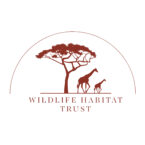OUR MISSION IS TO HELP PRESERVE AFRICA'S HABITATS WHILST WORKING WITH LOCAL COMMUNITIES
The Wildlife Habitat Trust was created to address the urgent challenge of habitat loss. The land available for conservation in much of Kenya is rapidly shrinking due to increased human populations with settlements and urbanization expanding into wildlife dispersal areas. The Trust supports the wildlife conservancies on community lands in the Maasai Mara and Amboseli eco-systems, home to more than a quarter of Kenya’s wildlife, including elephants, the big cats, over a million migrating wildebeest, and hundreds of thousands of zebra and gazelles.
Together with a few other like-minded safari tourism companies and in partnership with local Maasai communities , Gamewatchers Safaris has been instrumental in adding 100,000 acres of protected wildlife habitat adjacent to the Mara Reserve in the form of three adjoining wildlife conservancies: Ol Kinyei, Naboisho and Olare Motorogi on land leased from thousands of individual Maasai families. In addition to the Mara, they had previously set up the Selenkay Conservancy, on 13,500 acres of community land in the Amboseli eco-system which has been a great success in conserving the wildlife dispersal area and eco-system beyond Amboseli National Park, especially for elephants and big cats. This graphic highlights the growth of habitat under protection and on our conservancy concept since inception.
How it works
- Each of the conservancies with which we are involved is a vast tract of land belonging to Maasai communities that have been leased out to be designated as a protected habitat for wildlife with no human settlement and no fencing, providing a natural biodiverse habitat for wildlife to thrive.
- The Gamewatchers Safaris model is to generate income from tourism to pay for the costs of the conservancies by operating several small tourist camps within the conservancies at a low-impact density of 1 tent per 700 acres of land – the Porini Camps.
- These small safari camps employ local community members as camp staff and as safari guides to provide local expertise on the wildlife species in the ecosystem
- The conservancies also employ local community members as wardens and rangers to protect the wildlife and to ensure there is no poaching, trespassing or damage to the environment.
- The conservancy model yields tangible economic returns to Maasai communities: families receive monthly lease payments for their land.
- Income from tourism is also used to make contributions to community projects such as schools, medical treatment, provision of water and livestock protection.
In the video below, our Managing Director speaks on the conservancy concept and the impact it has had on our communities and the Adopt-An-Acre initiative.
These Conservancies have been recognized as playing a vital role in expanding the lands where wildlife can freely roam beyond the boundaries of the National Parks and National Reserves, allowing the big cats and elephants to have a safe haven where they can thrive and protecting the furthest extent of the wildebeest migration route for the wildebeest.
And they have made a big difference to the lives of many hundreds of people from the local Maasai communities who own the land where the Conservancies are located.
They derive a monthly income from the rents paid to them for their plots of land that have been leased and put together to form the Conservancies and many of their family members have jobs and livelihoods within the conservancies where they work as wardens, rangers and as staff in the safari camps looking after visitors and taking them out to enjoy watching all the different wildlife species.

Kenya’s eminent elephant conservationist, Cynthia Moss, has described the setting up of the Conservancies as “the single most successful conservation initiative since the creation of National Parks in the 1940s”. Cynthia states: “Conservancies protect land for Kenya’s wildlife and even more important, create sanctuaries of safety. In addition conservancies bring benefits in the form of direct payments and jobs to the people who share their land with wildlife.”
Since the conservancies were first set up, many visitors have had the memorable experience of discovering what it means to be in a beautiful unspoilt part of Africa where the savannah plains are teeming with wildlife such as elephants, all the big cats and many different herbivores like giraffes, zebra, buffalo and antelopes of all kinds.
LEARN MORE ABOUT THE MAASAI COMMUNITIES THAT YOU'LL SUPPORT BY ADOPTING ACRES
The Conservancies are teeming with wildlife at the moment and the Maasai communities with whom we work are enthusiastic and dedicated in their role as conservationists so your help will be invaluable and will go towards something worthwhile that can make a big difference to conservation and communities! As soon as international tourism to Kenya resumes we will be delighted to welcome back visitors from overseas once more.
Our team are looking forward to getting back to work again looking after our guests and taking them on safari. And the wildlife is flourishing – if you take a look at the latest images and videos on our Facebook page and our website you can see that right now in the conservancies it’s like the Garden of Eden! We have plans to introduce more viewing hides, after the success of our first hide at Porini Rhino Camp and the platform by the waterhole at Porini Amboseli, and will be installing them in the Mara too, for even better wildlife viewing!
Ol Kinyei Conservancy –the pristine setting of our Porini Mara and Porini Cheetah Camps – is included on the prestigious IUCN Green List of Protected and Conserved Areas, one of only 77 in the world.
